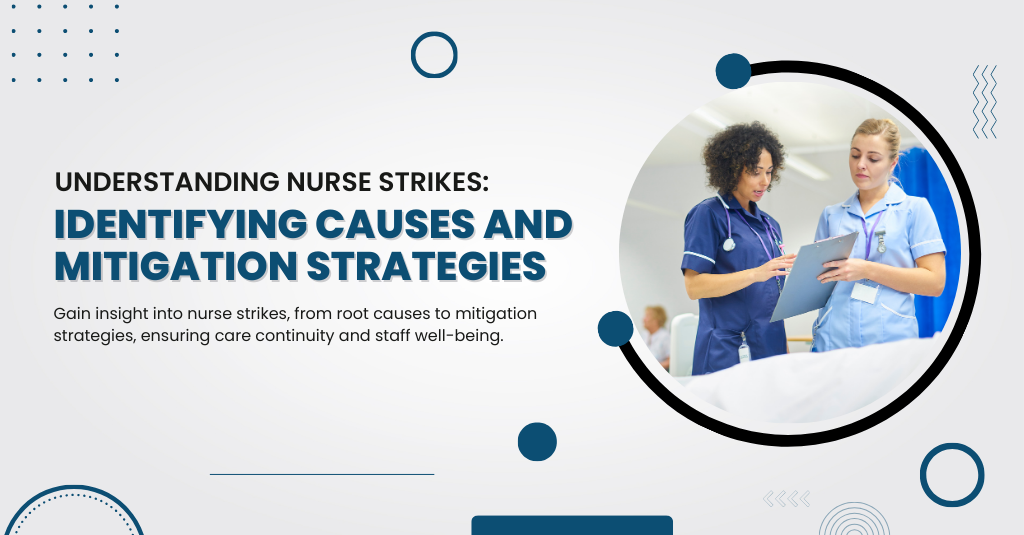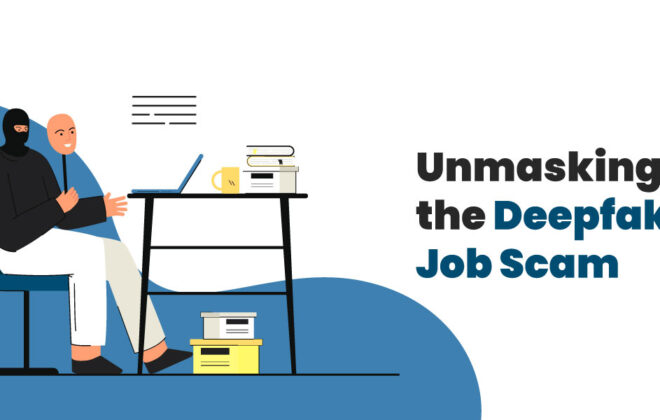Understanding Nurse Strikes: Identifying Causes and Mitigation Strategies
In the intricate tapestry of healthcare delivery, nurses serve as the linchpin, providing compassionate care and critical support to patients across diverse settings. However, amidst the noble pursuit of healing, the specter of nurse strikes occasionally emerges, casting a shadow over the industry and posing significant challenges to healthcare organizations, professionals, and patients alike. In this comprehensive exploration, we embark on a deep dive into the phenomenon of nurse strikes, unraveling their root causes, dissecting their wide-ranging ramifications, and crafting holistic strategies for effective mitigation. Tailored for healthcare administrators, policymakers, and stakeholders, this exhaustive analysis aims to foster a nuanced understanding of nurse strikes and chart a course toward sustainable solutions.
Causes Unveiled: What Sparks Nurse Strikes:
-
- Staffing Shortages: At the heart of many nurse strikes lies the perennial issue of understaffing, where healthcare institutions grapple with inadequate nurse-to-patient ratios, leading to overburdened nurses and compromised patient care. Research from the American Nurses Association (ANA, 2023) underscores the detrimental effects of staffing shortages on nurse workload and patient outcomes, highlighting the urgent need for proactive solutions.
- Working Conditions: Nurses frequently confront challenging working conditions characterized by long hours, high-stress environments, and limited resources, contributing to burnout, job dissatisfaction, and attrition. Studies published in the Journal of Nursing Management (2022) shed light on the adverse effects of poor working conditions on nurse well-being and professional fulfillment, emphasizing the imperative of fostering supportive work environments.
- Compensation Disparities: Discrepancies in wages, benefits, and career advancement opportunities across healthcare settings perpetuate feelings of undervaluation and discontent among nursing professionals. Data from the Bureau of Labor Statistics (BLS, 2022) reveal significant variations in nurse compensation, underscoring the importance of equitable pay practices in promoting retention and morale.
- Contract Disputes: Negotiations between nursing unions and healthcare administrators often reach an impasse over contractual terms, including issues such as salary adjustments, benefits packages, and workload distribution. Insights from the National Nurses United (NNU, 2023) highlight the complexities of labor negotiations and the need for collaborative approaches to resolving disputes while safeguarding patient care standards.
- Staffing Shortages: At the heart of many nurse strikes lies the perennial issue of understaffing, where healthcare institutions grapple with inadequate nurse-to-patient ratios, leading to overburdened nurses and compromised patient care. Research from the American Nurses Association (ANA, 2023) underscores the detrimental effects of staffing shortages on nurse workload and patient outcomes, highlighting the urgent need for proactive solutions.
Optimizing Contingent Labor for Patient-Centric Care
Download Now!
Navigating the Fallout – The Impact of Nurse Strikes:
- Compromised Patient Care: Nurse strikes disrupt the continuity of care, leading to delayed treatments, increased wait times, and heightened risks for adverse events. Studies published in The Lancet (2021) underscore the negative impact of nurse strikes on patient safety and emphasize the importance of maintaining uninterrupted healthcare services.
- Economic Consequences: Nurse strikes impose significant financial burdens on healthcare institutions, stemming from lost revenues, canceled procedures, and increased staffing costs to mitigate disruptions. Research from Health Affairs (2022) highlights the economic toll of labor disputes in healthcare and calls for proactive measures to mitigate financial losses.
- Strained Interprofessional Relationships: Nurse strikes strain relationships between healthcare administrators, nursing staff, and other healthcare professionals, fostering an atmosphere of mistrust and discord. The Journal of Healthcare Management (2023) emphasizes the need for effective communication and conflict resolution strategies to rebuild trust and collaboration within healthcare teams.
- Public Perception: Nurse strikes elicit varied responses from the public, ranging from expressions of solidarity with nurses to concerns over access to essential healthcare services. Findings from the Pew Research Center (2023) underscore the importance of transparent communication and community engagement in managing public perceptions during labor disputes.
Strategies to Mitigate Nurse Strikes:
-
- Proactive Staffing Solutions: Healthcare organizations must adopt proactive staffing strategies, including predictive staffing models, flexible scheduling arrangements, and targeted recruitment efforts, to address staffing shortages and optimize nurse-patient ratios. Research published in the Journal of Nursing Regulation (2022) advocates for evidence-based staffing practices to ensure safe and effective patient care delivery.
- Enhancing Work Environments: Prioritizing safe, supportive work environments through initiatives such as workplace safety protocols, wellness programs, and professional development opportunities can improve nurse satisfaction, retention, and performance. The Journal of Nursing Scholarship (2022) highlights the role of organizational culture in promoting nurse well-being and fostering a resilient workforce.
- Fair Compensation Policies: Healthcare institutions should review and revise compensation policies to ensure equity, transparency, and competitive pay structures for nursing professionals. Insights from the International Journal of Nursing Studies (2023) underscore the importance of fair compensation in attracting and retaining qualified nurses while acknowledging their invaluable contributions to patient care.
- Collaborative Conflict Resolution: Foster collaborative approaches to conflict resolution through transparent communication, mutual respect, and inclusive decision-making processes involving nursing staff, union representatives, and healthcare administrators. Recommendations from the Harvard Business Review (2022) emphasize the importance of principled negotiation strategies in reaching mutually beneficial agreements while preserving patient care standards.
Ready to Optimize Your Healthcare Compliance?
Book A Meeting Now!
How Infojini Empowers Healthcare Facilities:
Infojini, a leader in healthcare technology and workforce management solutions, stands ready to support healthcare organizations in navigating the complexities of nurse strikes with expertise and innovation. Leveraging advanced analytics, predictive modeling, and customized software solutions, Infojini can assist healthcare administrators in optimizing staffing levels, streamlining operations, and enhancing workforce productivity. Furthermore, Infojini’s comprehensive consulting services encompass conflict resolution, negotiation support, and change management, empowering healthcare leaders to address underlying issues contributing to nurse strikes and foster a culture of collaboration and resilience.
Conclusion – Resolving Nurse Strikes:
Nurse strikes represent a significant challenge within the healthcare landscape, driven by a confluence of systemic issues ranging from staffing shortages to compensation disparities and contractual disputes. By comprehensively addressing these root causes and implementing proactive mitigation strategies, healthcare organizations can minimize the impact of nurse strikes and cultivate environments conducive to high-quality patient care.
Through strategic partnerships with industry leaders like Infojini, healthcare institutions can leverage technology, data-driven insights, and best practices to navigate labor disputes with confidence and resilience. As we collectively strive to uphold the principles of patient safety, professional fulfillment, and organizational sustainability, let us remain committed to fostering a healthcare workforce that is empowered, supported, and equipped to meet the challenges of today and tomorrow.
Growing Nursing Shortage: Causes and Solutions
- What are some of the main causes of the nursing shortage in the United States?
- How has the COVID-19 pandemic exacerbated the nursing shortage?
- What role does Infojini play in solving the nursing shortage and supporting healthcare facilities?
Related Posts
Subscribe For Updates
Categories
- Accountant
- AI
- Automation
- Awards and Recognitions
- Blue Collar Staffing
- Burnouts
- Campus Recruiting
- Cloud
- Co-Ops agreements
- Company Culture
- Compliance
- contingent workforce
- Contingent Workforce
- COVID-19
- Cyber Security Staffing
- Data Strategy
- Digital Transformation
- direct sourcing
- Distributed Workforce
- Diversity
- Diversity & Inclusion
- Economy
- Events & Conferences
- fleet industry
- Gig Economy
- Girls in Tech
- Global Talent Research and Staffing
- Government
- Healthcare
- Healthcare Staffing
- Hiring Process
- Hiring Trends
- Home Helathcare
- HR
- HR Practices
- HR Tech
- IT
- Labor Shortages
- Life Science
- Local Governments
- News
- Nursing
- Payroll Staffing
- Public Sectors
- Recruiting
- Remote Work
- Skill Gap
- SMB Hiring
- Snowflake
- Staffing
- Staffing Augmentation
- Staffing Challenges
- Talent ROI
- Tech Staffing
- Technology
- Tips & tricks
- Total Talent Management
- UI/UX Design
- Uncategorized
- Veteran Staffing
- Veterans Hiring
- Veterans Hiring
- Workforce Management
Recent Posts
- Automation in Recruiting: From Chatbots to Predictive Screening
- Gig Economy Expansion: The Impact on Talent Pools and Business Models
- Skills-Based Hiring: Why Credentials Alone Don’t Cut It in 2025
- Procurement 3.0: AI & Intelligent Automation in 2025
- Q3 Is Here: Is Your Contingent Workforce Strategy Falling Behind?
Newsletter
Archive
- September 2025
- August 2025
- June 2025
- April 2025
- March 2025
- December 2024
- November 2024
- October 2024
- September 2024
- August 2024
- July 2024
- June 2024
- May 2024
- April 2024
- March 2024
- February 2024
- January 2024
- December 2023
- November 2023
- October 2023
- September 2023
- August 2023
- July 2023
- June 2023
- May 2023
- April 2023
- March 2023
- February 2023
- December 2022
- November 2022
- October 2022
- September 2022
- August 2022
- July 2022
- June 2022
- November 2021
- October 2021
- September 2021
- August 2021
- July 2021
- June 2021
- May 2021
- April 2021
- March 2021
- February 2021
- January 2021
- December 2020
- November 2020
- October 2020
- September 2020
- August 2020
- July 2020
- June 2020
- May 2020
- April 2020
- March 2020
- February 2020
- January 2020
- December 2019
- November 2019
- October 2019
- September 2019
- August 2019
- July 2019
- June 2019
- May 2019
- January 2019
- December 2018
- November 2018
- October 2018
- September 2018
- August 2018
- July 2018
- June 2018
- May 2018
- April 2018
- March 2018
- February 2018
- January 2018
- December 2017
- November 2017
- October 2017
- September 2017
- August 2017
- July 2017
- June 2017
- May 2017
- November 2016
- October 2016




